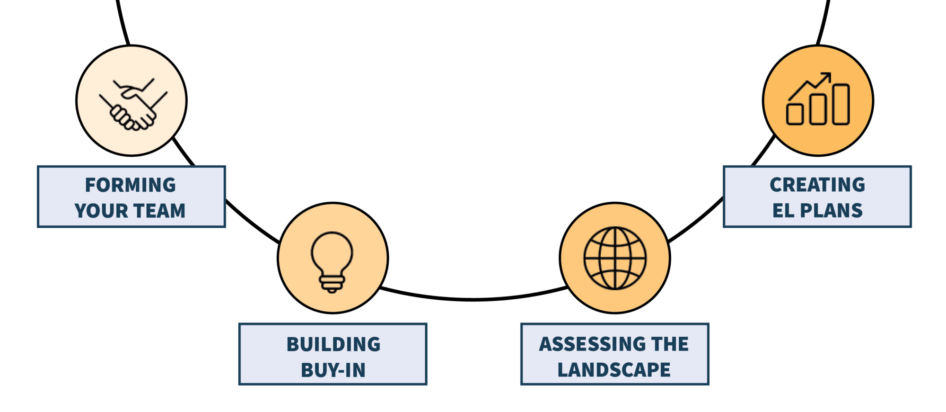District Environmental Literacy Planning Toolkit
This Toolkit provides some waypoints and important considerations for building systemic, sustainable, and community-centered environmental literacy within a school district by developing and implementing an environmental literacy plan.
District environmental literacy plans can be transformational for school districts when they consider the many aspects of school life, particularly campuses (facilities and operations), curriculum, community, and culture. These efforts generally happen in a series of phases that we are calling the “phases of change,” which start with forming a team and come to fruition when a district has systemic, community-centered, and sustainable implementation of its plan.

We encourage you to consider where along the journey you believe your school district is and which tools and ideas compiled here could support you best right now. If you are new to this work, we recommend you start at the beginning. It should be noted that the phases of change outlined can be non-linear and may be iterative in nature.
All district environmental literacy plans should include:
A matrix that shows where environmental literacy opportunities occur for students across disciplines throughout their K-12 career. This should include at least one MWEE in each grade band (elementary, middle, high).
Sustainable schools efforts in each school building (e.g., Green Ribbon Schools, EcoSchools).
Non-formal education and community partners and what environmental education efforts they support.
Long-term professional development opportunities for teachers around environmental education, project-based learning, and other related content and pedagogy.
Financial, staff, and other resources that are available and/or needed to support the plan.
Connections to state and/or district priorities (e.g., where environmental literacy has been identified in a strategic plan, how it ties to district core values).
A plan to assess progress towards increased environmental literacy on a regular basis.
A description of how the district is ensuring that environmental education experiences are relevant, and accessible for all students.
You may want to also consider how workforce development, career and technology education (CTE), STEM, climate education, and other key priorities are integrated into the plan.
A District Environmental Literacy Plan in Action
Curious to see what a district with an environmental literacy plan looks like? Arlington Public Schools started their work with support from a NOAA Chesapeake B-WET grant to implement a MWEE into their district's curriculum. The work continued after the grant ended. Now, all students from kindergarten to 12th grade have a MWEE experience.
Watch the video below to learn how school district leaders, teachers, and facilities managers worked together to embed systemic MWEEs into the curriculum, develop an environmental literacy plan, and create a culture of sustainability and environmental literacy throughout the district.
